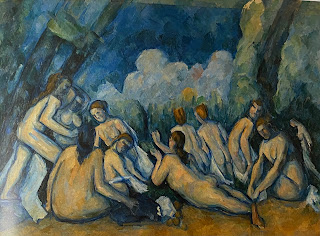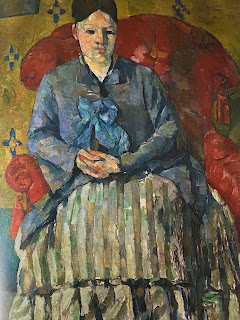12 Steps too Far
I write this on the day, late in August, when I would have been discharged from the Correctional Facility, having done my contracted time (before I discovered the disused ventilation shaft, enabling earlier escape).
That last bit is a fantasy embellishment, of course, and the place was not a correctional facility, but a clinic. A clinic for treating addictions of all sorts, but mainly drugs and alcohol.
Why was I there? On a personal level, because of a worry that was fast becoming a panic about my drinking and the conviction (note that word) that I couldn’t reduce it. On a treatment level, because of a binary philosophy that is quick to label problem drinking as an “addiction” requiring a particular type of intervention.
Leaving aside many details, I had been a consumer of lots of wine, on a daily basis, for most of my adult life. I was lucky (a somewhat misleading word in this context) that this habit for many years had no obvious outward physical effects- my blood tests were ok, I exercised regularly. I missed no commitments, either in personal or work life.
However, I and others close to me were worried, and as the years passed I was urged to cut down, both by doctors and loved ones. I agreed in principle but went on as usual in practice – until earlier this year I indeed felt truly that the habit could not continue without, sooner or later, serious adverse effects on my health and relationships.
But I had the conviction that I couldn’t cut back on my own: I needed help. Why did I have this conviction? That, with hindsight, was the great unexplored question.
When I presented this conviction to an addiction counsellor (my first move in getting help), it gave her a relatively easy task. Within what seemed like no time, I was told that residential detox and rehab was the thing for me, leading to sobriety and future support through Alcoholics Anonymous. In other words, I was an addict. How did I fancy a clinic in South Africa? Beautiful location and relatively cheap because of the exchange rate. Shocked by the diagnosis and the prescription, I at least resisted exile.
The counsellor did some more research, and came up with the Correctional Facility, cheaper than may fashionable clinics but still costing many £1000s for the 28 stay she insisted was the minimum necessary. I was on the Step machine…
So it was that at the beginning of August I presented myself to the door of a building in a country town, set back a little from a main road. Its website said that it is “located in the stunning –shire countryside”, with “luxurious grounds” and “luxury ensuite rooms’’. None of these claims is entirely true.
I entered full of anxiety. It was like going back to boarding school, with aspects of a prison regime. The latter was quickly in evidence, as a member of staff unpacked and examined all my belongings. Phone, iPad, and other electrical things were confiscated, even the toothbrush charger. Razor also. (You were allowed your phone and other devices for a couple of hours every afternoon. The razor had to be signed out every time I wanted to use it.)
It was forbidden to leave the building, except to go into the garden. The exception was a brief (20-30 minutes) walk every afternoon, in a group (always small), escorted by a member of staff.
Although there were some spacious bedrooms, mine was not, with just room for a bed and a very small desk. A small poor quality TV screen hung on the wall. The windows did indeed overlook the “luxurious grounds’ – a middling sized suburban garden.
In the garden was revealed another fact about this and other clinics – nearly everyone, patients and therapists, smokes or vapes. Smoking seems to be the consoling substitute addiction for those escaping or recovering from their main addictions.
It being warm summertime, and other compulsory activities permitting, the garden was always full of smokers, with favoured tables and benches right under my necessarily opened windows.
First up in the treatment regime was detox. Obviously, once through the door, there is no alcohol, so detox usually means the suffering of withdrawal, and its associated cravings and physical symptoms, for several days, closely supervised, and medicated by the anti-anxiety drug, Librium.
Here was the surprising thing. I had, perforce, to stop drinking at once. But I didn’t suffer. It was OK. I didn’t feel a needed a drink, or shake or sweat.
This was telling me something important. My “conviction” that I couldn’t stop or cut down drinking did not appear to be based on physical factors nor, in any deep sense, on uncontrollable dependence. Maybe I was NOT an addict.
The other aspect of treatment is rehab. In the Facility, this consisted chiefly of group therapy sessions based squarely on the AA’s 12 Steps.
Step 1, the premiss of all the others, is the admission;
We admitted we were powerless over alcohol – that our lives had become unmanageable.
(Many of the subsequent steps speak of the alcoholic putting their lives in the hands of a Greater Power to effect recovery. These days you are allowed to use your own secular interpretation of “Greater Power”, which is either helpful or vacuous.)
As the days passed I came more firmly to reject the premiss of Step1 as it applied to me. We each were assigned a therapist for the occasional one to one session. Mine was quite the 12 Steps evangelist, but she conceded that my putative addiction was an open question.
Among the other patients were some with truly awful life histories: dysfunctional families, hospital, prison, stabbings, trafficking, friends dying. In spite of these traumas suffered by many, everyone was friendly and open and, most of the time, reasonably cheerful. All this made the group sessions honest, compassionate and thought-provoking. However, I felt that my problems belonged largely to a different world.
Towards the end of 2 weeks (out of 4), I was feeling pretty alienated (especially from the actual AA or similar meetings we had to attend, however much they were helpful to many of the others). I warned my therapist that I was thinking of leaving early. She didn’t seem surprised. “at least it’s been an eye opener”, she said.
I left after 12 nights (less than half of my paid-for stay), the formalities of discharge completed, a wiser but financially poorer man.
I continued not drinking for the next week, without difficulty, to prove that voluntary as well as enforced abstinence was to be coped with. Then I gingerly started occasional moderate consumption, staying within health guidelines. There has been no “triggering”.
How did I find myself spending a small fortune to start the 12 Steps trail? It was perhaps because neither I, nor the professionals who saw me, stood back and probed my conviction that I could not control drinking. Was the reason addiction, or something else? I don’t think, now, that it was the former. And there are other reasons to hand: chronic anxiety, leading over the years to the occasional very black loss of self-esteem, and the implication that stopping behaviour that is self-destructive is “not worth it”. A bleak fatalism can grip.
The remedies for my problems are not, I believe, the 12 Steps of AA.
My experience at the Facility has, however, been a necessary boot up the backside, especially through compulsory abstinence, giving me confidence to, as someone once said about something, take back control..
There is a line at once both fine and blurred between bad habit and addiction. One way of determining which side of the line one falls is to be treated as an addict. If this scares one into breaking the habit, then there’s the answer. If only there had been another way.
Aug/Sept 2022















